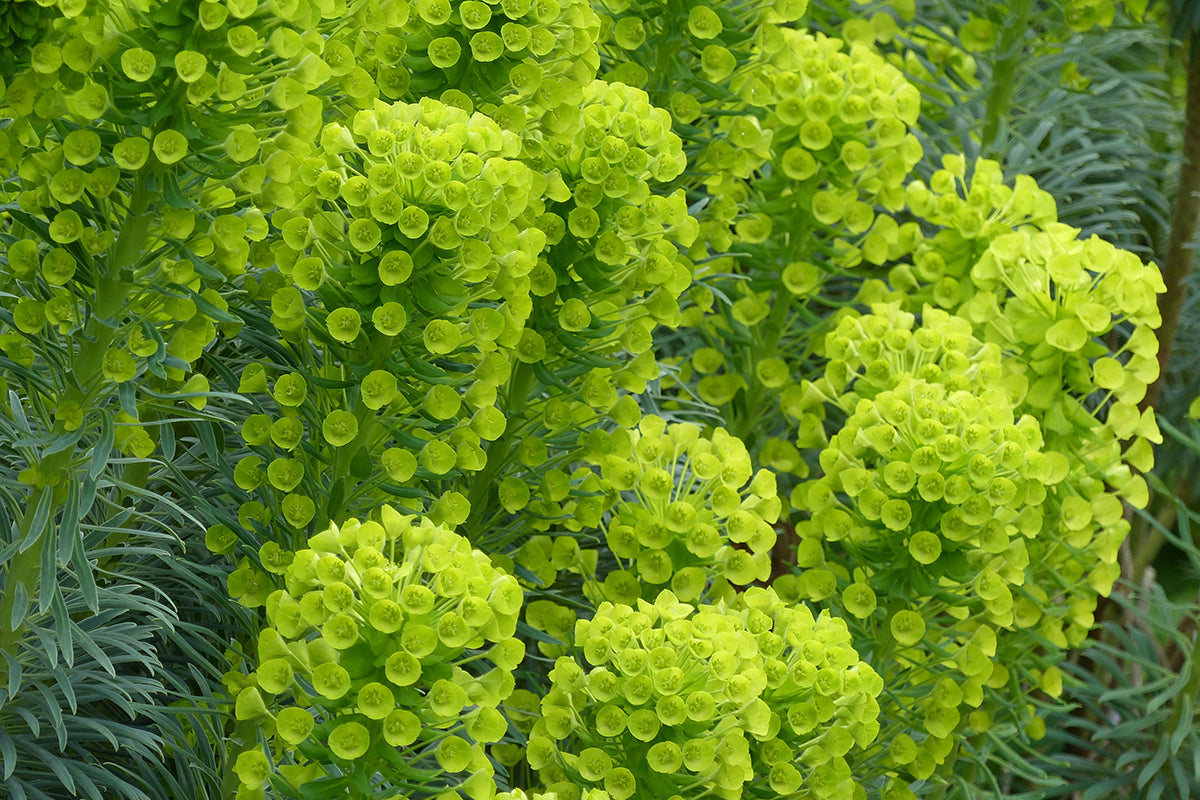Plant of the month - Euphorbia

Euphorbias are fabulous foliage plants with many displaying brilliant lime green flowers in spring and summer. Here’s a rundown of a few of our favourites.
One of the biggest varieties is E. mellifera, a bold architectural evergreen plant with rusty orange, honey-scented flowers in spring. The slightly smaller E. characias subsp wulfenii is another useful evergreen euphorbia, with tall stems of grey green leaves and billowing lime green flowers in spring that look great with purple geraniums and bulbs such as tulips and alliums. E. characias ‘Humpty Dumpty’ is a smaller compact variety and E. characias ‘Black Pearl’ with dark black eyes is a more unusual option.
Smaller, more delicate sun-loving euphorbias include delicate E. seguieriana with red stems and heads of tiny lime-green flowers, while E. cyparissias is a spreading perennial with needle-like, bluish green leaves and yellow-green flowers. Both of these are deciduous but E. myrsinites, my new discovery, is evergreen and low growing – great for gravel gardens or the front of a Mediterranean border.
Euphorbias that can cope with a little shade include E. palustris, a rounded compact euphorbia with fresh green foliage and bright green flowers throughout the summer months while E. ceratocarpa is more delicate than palustris, with narrow mid -green leaves. These are both deciduous.
For full shade, E. amygdaloides var. robbiae is a useful low-growing, early flowering euphorbia that look great with ferns or early flowering geraniums such as ‘Brookside’. It’s useful ground cover for a tricky spot, but can be a bit invasive, so keep an eye on it.







